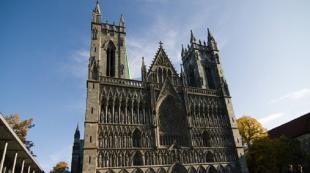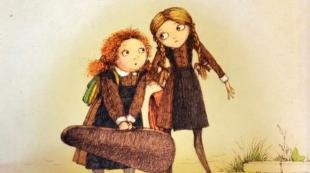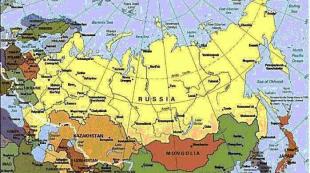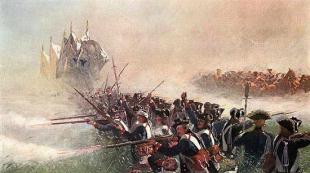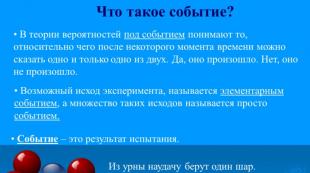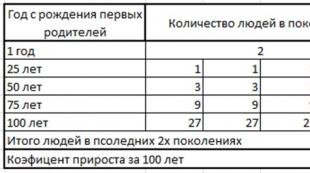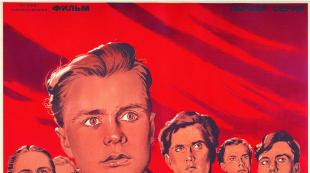Types of food webs. An example of a food web. specific species composition
Representatives of different trophic levels are interconnected by the unilaterally directed transfer of biomass into food chains. At each transition to the next trophic level, part of the available energy is not perceived, part is given off in the form of heat and part is spent on breathing. In this case, the total energy decreases several times each time. A consequence of this is the limited length of food chains. The shorter the food chain or the closer the body is to its beginning, the more quantity available energy in it.
The food chains of predators go from producers to herbivores, eaten by small carnivores, and they serve as food for larger predators, etc. As they move along the chain of predators, animals increase in size and decrease in number. The lengthening of the chain occurs due to the participation of predators in it. The relatively simple and short food chain of predators includes second-order consumers:
Grass (producer) -» Rabbits (consumer I order) ->
-» Fox (consumer II order).
A longer and more complex chain includes consumers of the fifth order:
Pine -> Aphids -> Ladybugs -> Spiders ->
-» Insectivorous birds -> Birds of prey.
Grass -» Herbivorous mammals -> Fleas -> Flagellates.
In detrital chains, consumers are detritivores belonging to various taxonomic groups: small animals, mainly invertebrates that live in the soil and feed on fallen leaves, or bacteria and fungi that decompose organic matter. In most cases, the activity of both groups of detritophages is characterized by strict coordination: animals create conditions for the work of microorganisms, dividing animal corpses and dead plants into small parts.
Detrital chains are also distinguished from pasture chains by the fact that a large number of detritivorous animals form a kind of community, the members of which are linked to each other by various trophic links (Fig. 10.4).
Rice. 10.4.
In this case, we can talk about the existence of food webs of detritus feeders, separated from the linear chains of predators. In addition, many detritus feeders are characterized by a wide range of food and can use, depending on the circumstances, along with detritus, algae, small animals, etc.

Rice. 10.5. The most important connections in food webs: a - American prairie; b- ecosystems northern seas for herring
Food chains, starting from green plants and from dead organic matter, are most often represented in ecosystems together, but almost always one of them dominates the other. Nevertheless, in some specific environments (for example, abyssal and underground), where the existence of organisms with chlorophyll is impossible due to the lack of light, only detrital food chains are preserved.
Food chains are not isolated from one another, but closely intertwined. They make up the so-called food webs. The principle of their formation is as follows. Each producer has not one, but several consumers. In turn, consumers, among whom polyphages predominate, use not one, but several food sources. To illustrate, we will give examples of a relatively simple (Fig. 10. 5a) and complex (Fig. 10.55) food webs.
In a complex natural community, those organisms that receive food from plants occupying the first trophic level through the same number of stages are considered to belong to the same trophic level. Thus, herbivores occupy the second trophic level (the level of primary consumers), the predators eating herbivores occupy the third (the level of secondary consumers), and secondary predators occupy the fourth (the level of tertiary consumers). It must be emphasized that the trophic classification divides into groups not the species themselves, but the types of their vital activity. A population of one species can occupy one or more trophic levels, depending on what energy sources these species use. In the same way, any trophic level is represented not by one, but by several species, as a result of which the food chains are intricately intertwined.
The food chain is made up of different types of organisms. At the same time, organisms of the same species can be part of different food chains. Therefore, food chains intertwine, forming complex food webs that span all ecosystems of the planet. [...]
The food (trophic) chain is the transfer of energy from its source - producers - through a number of organisms. Food chains can be divided into two main types: the grazing chain, which starts with a green plant and goes on to grazing herbivorous animals and predators, and the detrital chain (from the Latin worn out), which starts from the decay products of dead organic matter. In the formation of this chain, various microorganisms play a decisive role, which feed on dead organic matter and mineralize it, again turning it into protozoa. organic compounds... Food chains are not isolated from one another, but closely intertwined with each other. Often an animal consuming a live organic matter, also eats microbes that consume inanimate organic matter. Thus, the pathways of food consumption branch out, forming the so-called food webs. [...]
The food web is a complex entanglement in the food chain community. [...]
Food webs are formed because almost any member of any food chain is simultaneously a link in another food chain: it is consumed and consumed by several types of other organisms. So, in the food of the meadow wolf - coyote, there are up to 14 thousand species of animals and plants. Probably, the same order of the number of species participating in the eating, decomposition and destruction of substances from the corpse of a coyote. [...]
Food chains and trophic levels. Tracking food relationships between members of the biocenosis ("who eats whom and how much"), it is possible to build food chains different organisms... An example of a long food chain is the sequence of inhabitants of the Arctic sea: “microalgae (phytoplankton) -> small herbivorous crustaceans (zooplankton) - carnivorous plankton-feeders (worms, crustaceans, molluscs, echinoderms) -> fish (2-3 links of the sequence of predatory fish are possible) - > seals -> polar bear ". Terrestrial ecosystem chains are usually shorter. The food chain, as a rule, is artificially separated from the real food web - the intertwining of many food chains. [...]
The food web is a complex web of food relationships. [...]
Food chains imply a linear flow of resources from one trophic level to the next (Fig. 22.1, a). In this design, interactions between species are simple. However, no system of resource flows in BE follows this simple structure; they are much more like a network structure (Figure 22.1, b). Here, species at one trophic level feed on several species at the next, lower level, and omnivorousness is widespread (Fig. 22.1, c). Finally, a fully defined food web can exhibit different characteristics: multiple trophic levels, predation, and omnivorousness (Figure 22.1, [...]
Many food chains, intertwining in biocenoses and ecosystems, form food webs. If the general food chain is depicted in the form of building blocks, conditionally representing the quantitative ratio of the energy assimilated at each stage, and stacked on top of each other, you get a pyramid. It is called the ecological pyramid of energies (Fig. 5). [...]
Food chain and food web diagrams. Dots represent views, lines represent interactions. Higher species are predators relative to lower ones, so resources flow from the bottom up. [...]
In the first type of food web, the flow of energy goes from plants to herbivorous animals, and then to consumers more high order... This is a grazing net, or a grazing net. Regardless of the size of the biocenosis and habitat, herbivorous animals (terrestrial, aquatic, soil) graze, eat up green plants and transfer energy to the following levels (Fig. 96). [...]
In communities, food chains are intricately intertwined and form food webs. The composition of the food of each type usually includes not one, but several types, each of which, in turn, can serve as food for several species. On the one hand, each trophic level is represented by many populations of different species; on the other hand, many populations belong to several trophic levels at once. As a result, due to the complexity of food links, the loss of one species often does not upset the balance in the ecosystem. [...]
[ ...]
This diagram not only illustrates the interweaving of food links and shows three trophic levels, but also reveals the fact that some organisms occupy an intermediate position in the system of three main trophic levels. Thus, caddis larvae building a trapping net feed on plants and animals, occupying an intermediate position between primary and secondary consumers. [...]
The primary source of human food resources were those ecosystems in which he could exist. The methods of obtaining food were gathering and hunting, and as the manufacture and use of more and more advanced tools developed, the share of hunting prey increased, and hence the share of meat, that is, complete proteins, in the diet. The ability to organize large stable groups, the development of speech, which allows organizing the complex coordinated behavior of many people, made a person a “superpredator” who took the top position in the food webs of those ecosystems that he mastered as he settled on the Earth. So, the only enemy of the mammoth was a man who, together with the retreat of the glacier and climate change, became one of the reasons for the death of these northern elephants as a species. [...]
[ ...]
Based on a study of 14 food webs in communities, Cohen found a surprising constancy of the ratio of the number of prey “types” to the number of predator “types”, which was about 3: 4. Further evidence confirming this ratio is provided by Bryand and Cohen, who studied 62 similar networks. The graph of such proportionality has a slope of less than 1 in both fluctuating and constant media. The use of "types" of organisms, rather than true species, usually gives not completely objective results, however, although the resulting prey / predator ratio may be underestimated, its consistency is remarkable. [...]
In BE, many (but certainly not all) food webs have a large number of primary producers, fewer consumers, and very few top predators, giving the web the shape shown in Figure 1. 22.1, b. Omnivores in these systems may be rare, while decomposers are abundant. Food web models have provided a potential basis for fruitful analysis of resource flows in both BE and PE. Difficulties arise, however, when one tries to quantify resource flows and subject network structure and stability properties to mathematical analysis. It turns out that many of the required data are difficult to identify with certainty, especially with regard to organisms that function at more than one trophic level. This property does not create the main difficulty in studying resource flows, but it seriously complicates the analysis of stability. The assertion that more complex systems are more stable - since the destruction of one kind or paths of flows simply transfers energy and resources to other paths, rather than blocking the path for the entire flow of energy or resources - is hotly debated. [...]
Analysis of a large number of industrial food webs can thus reveal characteristics not shown in other approaches. In the ecosystem project in Fig. 22.5, for example, network analysis may reflect a missing sector or type of industrial activity that can increase connectivity. These topics provide a rich area for detailed research [...]
Within each ecosystem, food webs have a well-defined structure, which is characterized by the nature and number of organisms present at each level of the various food chains. To study the relationships between organisms in an ecosystem and to graphically depict them, not food web diagrams are usually used, but ecological pyramids. Ecological pyramids express the trophic structure of an ecosystem in geometric form. [...]
The length of food chains is of some interest. It is clear that the decrease in available energy in the transition to each successive link limits the length of food chains. However, the availability of energy is probably not the only factor, as long food chains are often found in infertile systems, such as oligotrophic lakes, and short ones in highly productive, or eutrophic, systems. Rapid production of nutritious plant material can stimulate rapid grazing, as a result of which the energy flow is concentrated at the first two to three trophic levels. Eutrophication of lakes also changes the composition of the planktonic food web “phytoplankton-large zooplankton-predatory fish”, transforming it into a microbial-detrital microzooplankton system, which is not so conducive to the maintenance of sport fishing. [...]
With a constant energy flow in the food web, or chain, smaller terrestrial organisms with a high specific metabolism create relatively less biomass than large ones1. A significant part of the energy is spent on maintaining metabolism. This rule of "metabolism and size of individuals", or the rule of J. Odum, is usually not implemented in aquatic biocenoses when taking into account the real living conditions in them (under ideal conditions, it has universal significance). This is due to the fact that small aquatic organisms largely support their metabolism due to external energy from the immediate environment. [...]
The soil microflora has a well-developed food web and a powerful compensation mechanism based on the functional interchangeability of some species with others. In addition, thanks to the labile enzymatic apparatus, many species can easily switch from one nutrient substrate to another, thereby ensuring the stability of the ecosystem. This significantly complicates the assessment of the impact of various anthropogenic factors on it and requires the use of integral indicators. [...]
[ ...]
First of all, randomized food webs often contain biologically meaningless elements (for example, loops of this type: A eats B, B eats C, C eats A). Analysis of “meaningfully” constructed networks (Lawlor, 1978; Pimm, 1979a) shows that (a) they are more stable than those considered and (b) there is no such abrupt transition to instability (in comparison with the above inequality), although the stability still decreases with increasing complexity. [...]
| 21.2 |  |
Of course, yes, if not in the composition of biogeocenoses - the lower levels of the hierarchy of ecosystems - then at least within the framework of the biosphere. People get food from these networks (agrocenoses are modified ecosystems with a natural base). Only from the "wild" nature people extract fuel - energy, main fish resources, other "gifts of nature." VI Vernadsky's dream of the complete autotrophy of mankind remains an irrational dream1 - evolution is irreversible (L. Dolo's rule), as is the historical process. Without genuine autotrophs, mainly plants, a person cannot exist as a heterotrophic organism. Finally, if he was not physically included in the food webs of nature, then his body after death would not undergo destruction by organisms-decomposers, and the Earth would be littered with non-decaying corpses. The thesis of the separateness of man and natural food chains is based on a misunderstanding and is clearly erroneous. [...]
In ch. 17 analyzes the ways of combining various groups of consumers and their food into a network of interacting elements, through which the transfer of matter and energy occurs. In ch. 21 we will return to this topic and consider the influence of the structure of the food web on the dynamics of communities as a whole, paying particular attention to the features of their structure that contribute to stability. [...]
Four examples will suffice to illustrate the basic features of food webs, food webs and trophic levels. The first example is the region of the Far North, called the tundra, where there are relatively few species of organisms that have successfully adapted to low temperatures. Therefore, the food chains and food webs are relatively simple here. One of the founders of modern ecology, British ecologist Charles Elton, realizing this, already in the 1920s and 1930s, began to study the Arctic lands. He was one of the first to clearly outline the principles and concepts associated with the food chain (Elton, 1927). Plants of the tundra - lichen ("deer moss") C1a donia, grasses, sedges and dwarf willows constitute the food of the caribou deer in the North American tundra and its ecological analogue in the tundra of the Old World - the reindeer. These animals, in turn, serve as food for wolves and humans. Tundra plants are also eaten by lemmings - fluffy short-tailed rodents resembling a miniature bear and tundra partridges. All long winter and that's it short summer Arctic foxes and snowy owls feed mainly on lemmings. Any significant change in the lemming population is reflected in other trophic levels, as there are few other food sources. That is why the abundance of some groups of Arctic organisms varies greatly from super abundance to almost complete extinction. This often happened in human society if it depended on one or more of a few food sources (remember the "potato famine" in Ireland1). [...]
One of the consequences of the stability hypothesis, which in principle can be tested, is that in environments with less predictable behavior, food chains should be shorter, since they, apparently, retain only the most elastic food webs, and in short chains the elasticity above. Briand (1983) divided 40 food webs (according to the data he collected) into those associated with variable (positions 1-28 in Table 21.2) and constant (positions 29-40) environments. There were no significant differences in the average length of the maximum food chains between these groups: the number of trophic levels was 3.66 and 3.60, respectively (Fig. 21.9). These provisions still need critical review. [...]
In addition, the simulation results become different when it is taken into account that the population of consumers is influenced by food resources, and those do not depend on the influence of consumers (¡3, / X), 3 (/ = 0: the so-called "donor-regulated system" ), In a food web of this type, resistance either does not depend on complexity, or increases with it (DeAngelis, 1975). In practice, the only group of organisms that usually satisfies this condition are detritivores. [...]
However, such a strict picture of the transition of energy from level to level is not entirely realistic, since the food chains of ecosystems are complexly intertwined, forming food webs. For example, the phenomenon of a “trophic cascade”, when, as a result of predation, there is a change in density, biomass, or productivity of a population, community, or trophic level along more than one line of the food web (Pace et al., 1999). P. Mitchell (2001) gives an example: sea otters feed on sea urchins that eat brown algae, the destruction of otters by hunters has led to the destruction of brown algae due to the growth of the population of hedgehogs. When otter hunting was banned, algae began to return to their habitats. [...]
Green plants convert the energy of photons from sunlight into energy chemical bonds complex organic compounds that continue their way through the branched food webs of natural ecosystems. However, in some places (for example, in swamps, in river estuaries and seas), part of the organic plant matter, having fallen to the bottom, is covered with sand before it becomes food for animals or microorganisms. In the presence of a certain temperature and pressure of soil rocks for thousands and millions of years, coal, oil and other fossil fuels are formed from organic substances, or, in the words of V. I. Vernadsky, “living matter goes into geology.” [...]
Examples of food chains: plants - herbivorous animals - predator; grass-field mouse-fox; fodder plants - cow - human. As a rule, each species feeds on more than one species. Therefore, food chains intertwine to form a food web. The more strongly organisms are connected with each other by food webs and other interactions, the more resilient the community is against possible disturbances. Natural, undisturbed ecosystems strive for balance. The state of equilibrium is based on the interaction of biotic and abiotic environmental factors. [...]
For example, the destruction of economically significant pests in forests with pesticides, the shooting of part of animal populations, the catch of certain species of commercial fish are partial obstacles, since they affect only certain links of the food chain, without affecting the food webs as a whole. The more complex the food web, the structure of the ecosystem, the less the significance of such interference, and vice versa. At the same time, the release and discharge into the atmosphere or water of chemical xenobiotics, such as oxides of sulfur, nitrogen, hydrocarbons, fluorine compounds, chlorine, heavy metals, radically changes the quality of the environment, interferes at the level of producers as a whole, and therefore leads to complete ecosystem degradation: as the main trophic level dies - producers. [...]
Volatile capacity = (/ gL -) / k V. Energy diagram of a primitive system in Uganda. D. The energy scheme of agriculture in India, where light is the main source of energy, but the flow of energy through livestock and grain is regulated by humans. D. Energy network of highly mechanized agriculture. High yields are based on a significant investment of energy through the use of fossil fuels, due to which work previously done by humans and animals is performed; at the same time, the food web of animals and plants falls out, which had to be “fed” in the two previous systems. [...]
A number of attempts have been made to analyze mathematically the relationship between community complexity and its resilience, most of which the authors came to approximately the same conclusions. A review of such publications has been provided by May (1981). As an example, consider his work (May, 1972), which demonstrates both the method itself and its disadvantages. Each species was influenced by its interactions with all other species; quantitatively, the influence of the density of the species / on the growth of the number of i was estimated by the indicator p. In the complete absence of influence, it is equal to zero, in two competing species Pc and Pji are negative, in the case of a predator (¿) and a prey (/), Ru is positive, and jjji is negative. [...]
Acidic precipitation causes lethal consequences for life in rivers and bodies of water. Many lakes in Scandinavia and the eastern part of North America turned out to be so acidified that fish cannot not only spawn in them, but also simply survive. In the 70s, fish completely disappeared in half of the lakes in these regions. The most dangerous acidification of oceanic shallow waters, leading to the impossibility of reproduction of many marine invertebrates, which can cause a rupture of food webs and deeply disturb the ecological balance in the oceans. [...]
Models of donor-controlled interactions differ in a number of ways from traditional models of predator-prey interactions of Lotka-Vol-terra (Ch. 10). One of the important differences is that it is believed that interacting groups of species, which are characterized by donor-controlled dynamics, are especially stable and, further, that this resistance does not actually depend on the increase in species diversity and complexity of the food web, or even increases. This situation is completely opposite to that in which the Lotka-Volterra model applies. We will discuss these important issues of food web complexity and community resilience in more detail in Chap. 21.
Trophic structure of biocenoses
ECOLOGY OF COMMUNITIES (SYNECOLOGY)
Populations of different species in natural conditions are combined into systems of a higher rank - community and biocenosis.
The term "biocenosis" was proposed by the German zoologist K. Moebius and denotes an organized group of populations of plants, animals and microorganisms adapted to cohabitation within a certain volume of space.
Any biocenosis occupies a certain area of the abiotic environment. Biotope– a space with more or less homogeneous conditions, inhabited by one or another community of organisms.
The sizes of biocenotic groups of organisms are extremely diverse - from communities on a tree trunk or on a moss bog to a feather grass steppe biocenosis. A biocenosis (community) is not just the sum of its constituent species, but also a set of interactions between them. Community ecology (synecology) is also a scientific approach in ecology, in accordance with which, first of all, the complex of relationships and the dominant relationships in the biocenosis are investigated. Synecology deals mainly with biotic environmental factors of the environment.
Within the biocenosis are distinguished phytocenosis- a stable community of plant organisms, zoocenosis- a set of interrelated animal species and microbiocenosis - community of microorganisms:
PHYTOCENOSIS + ZOOCENOSIS + MICROBIOCENOSIS = BIOCENOSIS.
At the same time, neither phytocenosis, nor zoocoenosis, nor microbiocenosis are found in nature in their pure form, as well as biocenosis in isolation from the biotope.
Biocenosis is formed by interspecific relationships that provide the structure of the biocenosis - the number of individuals, their distribution in space, species composition, etc., as well as the structure of the food web, productivity and biomass. To assess the role of a particular species in the species structure of the biocenosis, the abundance of the species is used - an indicator equal to the number of individuals per unit area or volume of occupied space.
The most important type of relationship between organisms in the biocenosis, which actually forms its structure, is the food relationship between a predator and a prey: some are eating, others are being eaten. Moreover, all organisms, living and dead, are food for other organisms: a hare eats grass, a fox and a wolf hunt hares, birds of prey (hawks, eagles, etc.) are able to drag away and eat both a fox and a wolf cub. Dead plants, hares, foxes, wolves, birds become food for detritivores (decomposers or otherwise destructors).
A food chain is a sequence of organisms in which each one eats or decomposes the other. It represents the path of a unidirectional flow of a small part of the highly efficient solar energy absorbed during photosynthesis, which has entered the Earth, moving through living organisms. Ultimately, this circuit returns to the natural environment in the form of inefficient thermal energy. Nutrients also move along it from producers to consumers and then to reducers, and then back to producers.
Each link in the food chain is called trophic level. The first trophic level is occupied by autotrophs, otherwise referred to as primary producers. Organisms of the second trophic level are called primary consumers, the third - secondary consumers, etc. Usually there are four or five trophic levels and rarely more than six (Fig. 5.1).
There are two main types of food webs - grazing (or “grazing”) and detrital (or “decay”).
Rice. 5.1. Food chains of biocenosis according to N.F. Reimers: generalized (a) and real (b). The arrows show the direction of energy movement, and the numbers show the relative amount of energy arriving at the trophic level.
V pasture food chains the first trophic level is occupied by green plants, the second - by pasture animals (the term "pasture" covers all organisms that feed on plants), and the third - by predators. So, pasture food chains are:
Detrital food chain starts with detritus according to the scheme:
DETRITIS → DETRITOPHAGUS → PREDATOR
Typical detrital food chains are:
The food chain concept allows further traceability of the cycle chemical elements in nature, although simple food chains such as those depicted earlier, where each organism is represented as feeding on only one type of organism, are rare in nature. Real food connections are much more complicated, because an animal can feed on organisms of different types included in the same food chain or in different chains, which is especially characteristic of predators (consumers) of higher trophic levels. The relationship between grazing and detrital food chains is illustrated by the model of energy flow proposed by Yu. Odum (Fig. 5.2).
Omnivorous animals (in particular, humans) feed on both consumers and producers. Thus, in nature, food chains intertwine and form food (trophic) webs.
When studying the biotic structure of an ecosystem, it becomes obvious that one of the most important relationships between organisms is food. It is possible to trace the countless paths of movement of matter in an ecosystem, in which one organism is eaten by another, and that by a third, etc.
Detritophages
Eagle Detritophages V
Fox Human Eagle Detritophages IV
Mouse Hare Cow Human Detritophages III
Wheat Grass Apple I
Food chain is the path of movement of matter (energy source and building material) in an ecosystem from one organism to another.
Plant cow
Plant cow man
Plant grasshopper mouse fox eagle
Plant beetle frog snake bird
Indicates the direction of travel.
In nature, food chains are rarely isolated from each other. More often, representatives of one species (herbivores) feed on several species of plants, and themselves serve as food for several species of predators. Transport of harmful substances in the ecosystem.
Food web is a complex web of food relationships.
Despite the variety of food webs, they all follow the general pattern: from green plants to primary consumers, from them to secondary consumers, etc. and to detritus feeders. Detritus feeders are always in last place, they close the food chain.
Trophic level is a collection of organisms that occupy a certain place in the food web.
I trophic level - always plants,
II trophic level - primary consumers
III trophic level - secondary consumers, etc.
Detritus feeders can be at trophic level II and higher.
III 3.5 J secondary consumer (wolf)
II 500 J primary consumer (cow)
I 6200 J plants
2.6 * 10 J solar energy absorbed
1.3 * 10 J falls on the surface of the earth at
some area
Energy pyramid
III 10 kg fox (1)
II 100 kg hare (10)
I 1000 kg of plants in the meadow (100)
Biomass pyramid.
Usually, there are 3-4 trophic levels in an ecosystem. This is due to the fact that a significant part of the food consumed is spent on energy (90 - 99%), so the mass of each trophic level is less than the previous one. Relatively little is spent on the formation of the body of the organism (1 - 10%. The ratio between plants, consumers, detritus feeders is expressed in the form of pyramids.
Biomass pyramid- shows the ratio of biomasses of various organisms at trophic levels.
Energy pyramid- shows the flow of energy through the ecosystem. (see fig.)
Obviously, the existence of more trophic levels is impossible, due to the rapid approach of biomass to zero.
Autotrophs and heterotrophs.
Autotrophs - these are organisms that are able to build their bodies at the expense of inorganic compounds, using solar energy.
This includes plants (plants only). They synthesize from CO, HO (inorganic molecules) under the influence of solar energy - glucose (organic molecules) and O. They constitute the first link in the food chain and are at the 1st trophic level.
Getsrotrophs - these are organisms that cannot build their own body from inorganic compounds, but are forced to use the created autotrophs, eating them.
These include consumers and deposit feeders. And they are at the II and higher trophic level. Man is also a heterotroph.
Vernadsky's idea is that the transformation of human society from heterotrophic and autotrophic is possible. Due to their biological characteristics, a person cannot go to autotrophy, but society as a whole is capable of implementing an autotrophic method of food production, i.e. replacement of natural compounds (proteins, fats, carbohydrates) with organic compounds synthesized from inorganic molecules or atoms.
This is a set of food chains of a community, interconnected by common food links.
cabbage ^ caterpillar ^ titmouse ^ hawk ^ human
For example: carrot ^ hare ^ wolf
Species with a wide range of food can be included in food chains at different trophic levels. Only producers always occupy the first trophic level. Using solar energy and biogens, they form organic matter, which contains energy in the form of energy of chemical bonds. This organic matter, or biomass of producers, is consumed by organisms of the second trophic level. However, not all biomass of the previous level is consumed by organisms of the next level, therefore
that resources for the development of the ecosystem would disappear. During the transition from one trophic level to another, a transformation of matter and energy occurs. At each trophic level of the pasture food chain, not all of the eaten biomass goes to the formation of biomass of organisms of a given level. A significant part of it is spent on ensuring the vital activity of organisms: respiration, movement, reproduction, maintaining body temperature, etc. In addition, not all of the eaten biomass is assimilated. The undigested part of it in the form of excrement enters environment... The percentage of digestibility depends on the composition of food and biological characteristics of organisms, it ranges from 12 to 75%. The main part of the assimilated biomass is spent on maintaining the vital activity of organisms, and only a relatively small part of it is spent on building the body and growing. In other words, most of the substance and energy is lost during the transition from one trophic level to another, because only that part of them that was included in the biomass of the previous trophic level gets to the next consumer. It is estimated that about 90% is lost on average, and only 10% of matter and energy is transferred at each stage of the food chain. For example:
Producers ^ consumers I ^ consumers II ^ consumables III
1000 kJ ^ 100 kJ ^ 10 kJ ^ 1 kJ This pattern was formulated as the "10% law". It states that during the transition from one link to another in the pasture food chain, only 10% of matter and energy is transferred, and the rest is spent by the previous trophic level to maintain vital activity. If the amount of matter or energy at each trophic level is depicted in the form of a diagram and placed one above the other, then we get an ecological pyramid of biomass or energy (Fig. 13). This pattern is called the "ecological pyramid rule". The number of organisms at trophic levels also obeys this rule, therefore it is possible to build an ecological pyramid of numbers (Fig. 13).
Boy 1 Calves 4.5 Alfalfa 2107


Energy pyramid
Thus, the supply of matter and energy accumulated by plants in pasture food chains is quickly consumed (eaten away), so food chains cannot be long. They usually include 4-5 links, but no more than 10. At each trophic level of the pasture food chain, dead organic matter and excrement are formed - detritus, from which detrital chains or decomposition chains begin. In terrestrial ecosystems, the process of detritus decomposition includes three stages:
The stage of mechanical destruction and partial transformation into saccharides. It is very short - 3-4 years. It is carried out by decomposers of the first order - macrobiota (worms, insect larvae, burrowing mammals, etc.). At this stage, there is practically no energy loss.
The stage of destruction of detritus to humic acids. It lasts 10-15 years and is still poorly understood. It is carried out by reducers of the second order - the mesobiota (fungi, protozoa, micro-
organisms larger than 0.1 mm). Humic acids are humus, half-destroyed organic matter, therefore, when they are formed, part of the chemical bonds are broken and heat energy is released, which is dissipated in outer space.
3. The stage of destruction of humic acids to inorganic substances - biogens. It proceeds very slowly, especially in our temperate zone (hundreds and thousands of years) and has hardly been studied yet. It is carried out by reducers of the III order - microbiota (microorganisms less than 0.1 mm). When humic acids are destroyed, all chemical bonds are broken and a large amount of thermal energy is released, which is lost in outer space. The biogens formed as a result of this process do not contain energy; later they are absorbed by producers and again are involved in the circulation of matter.
As can be seen from the above, there is a delay in life at the level of decomposers, but this should not be so. The soil contains a supply of humic acids, which were formed a very long time ago, so there is no delay in life. In different ecosystems, the rate of destruction of humic acids is different. If it is less than the rate of their formation, then the soil fertility increases, if on the contrary, then it decreases. That is why, in the temperate zone, after the destruction of the biogeocenosis, the long-term use of soil fertility is possible. In the tropics, soil fertility is sufficient for 2-3 years, and then it turns into a desert. Here, the destruction of humic acids proceeds rapidly. This is facilitated by high temperature, humidity and aeration. In the temperate zone, the soil contains up to 55% of carbon, and in the tropics only up to 25%. That is why rainforests cannot be cleared to prevent desertification of the planet.
Thus, the flow of energy entering the ecosystem is further divided into two main channels - pasture and detrital. At the end of each of them, the energy is lost irretrievably, because plants in the process of photosynthesis cannot use thermal long-wave energy.
The ratio of the amount of energy passing through the grazing and detrital chains is different in different types of ecosystems. The loss of energy in food chains can only be replenished through the intake of new portions. This is done through the assimilation of solar energy by plants. Therefore, an ecosystem cannot have a cycle of energy, similar to the cycle of matter. The ecosystem functions only due to the directed flow of energy - its constant supply in the form of solar radiation, or in the form of ready-made organic matter.
